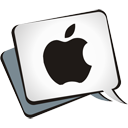As cloud based data storage becomes more popular, people are looking for new ways to have access to their ever increasing amounts of data while trying to reduce the cost of that storage. The answer, for many people is a personal Network Attached Storage (“NAS”) device and the Seagate Personal Cloud is worth strong consideration.
The Basics
Like most NAS devices, this unit does not connect to your computer and must be connected to an Ethernet port on your home router and requires Internet access to configure the unit and access files remotely. The Seagate Personal Cloud comes in both one drive and two drive models. The one drive model comes in a 3TB, 4TB or 5TB configuration, starting at an MSRP of $159.99. The two drive model comes in a 4TB, 6TB and 8TB configuration and starts at an MSRP of $299.99. All of the units require OS X 10.7 or later and come with a 2-year warranty.
Inside the box you’ll find the Seagate Personal Cloud device, power supply, Ethernet cable and Quick Start Guide. A more complete User Guide is available from Seagate’s web site along with many How-To and Troubleshooting aids.
Unlike most other NAS devices which mount the drives in an upright position, the Seagate Personal Cloud lays out the drive in a flat style. The two drive models have the drives next to each other so all of the units are less than 2” in height. This makes for easy storage on a desktop or shelf where you keep your other network gear the slimmer style complements similar style set-up devices.
Although the single drive version is a sealed unit, the two drive model allows the user to open the cover and get access to the NAS quality hard drives installed inside. This is handy in the event there is ever a drive failure since drive replacement appears fair straight forward although we didn’t actually try it. The Raid 1 configuration of the two drive model is not self-healing so you do need to go through a process to create a new volume and copy over the data from the remaining healthy drive, once the new drive is installed.
Set-Up
Set-up of the Seagate Personal Cloud is pretty straight-forward. Once connected to your router, the device will appear under the Shared Devices section of Finder and selecting it reveals a Public folder which contains a Personal Cloud link which brings you to a Welcome screen in your browser which walks you through setting up your owner account. Once that is complete you are then able to create additional accounts for other users.
Each user get a personal folder in which they can then create whatever folder structure they want. There is also a Public folder that can be used to share files with other Personal Cloud users.
Unlike some of the other NAS devices on the market, the Seagate Personal Cloud lacks some of the flexibility in creating file shares that can be configured as either public, shared by only certain users or completely private folders. That’s not necessarily a bad thing since it makes set up and configuration a much easier task. If however, you are a more technical user and want greater control over the folder structure and access rights, you may find this device administration lacking.
Usage
The Seagate Personal Cloud supports Time Machine and each user can back-up their Macs on an individual basis. The device also acts as an iTunes server allowing you to stream media directly from the device. However, it will not stream directly to an Apple TV. To do that, you need to install the Seagate iOS app on your iPhone or iPad and then use AirPlay to stream to the Apple TV. Finally, Seagate offers what is calls SDrive which provides remote access to all of your files and media while you are remote from your network, whether on your computer or an iOS device.
Whether you choose the single drive or two drive model, we recommend that you still back up the NAS contents to a separate external hard drive. The Seagate Personal Cloud supports that via the included USB2 and USB3 connections and built-in backup software. Although the back-up process is relatively easy, each user has to create their own back-up process to the external drive. We would like to see a more centralized approach so that the device owner/administrator can do a complete back-up of the unit as a single process. That said, the back-up software does provide the flexibility to do manual, scheduled or automatic back-ups (when an external drive is connected to the USB port).
The Bottom Line
There are a lot of NAS devices on the market competing for your consumer dollars and each offer something different in style, functionality and options. For the money, the Seagate Personal Cloud offers a nice mix of functions and features. If the dashboard allowed greater flexibility in setting up folders and users separately and granting access rights, this unit would be close to perfect. But that is somewhat of a personal choice and may not be considered a negative for many users. As such, we think the Seagate Personal Cloud is a great addition to your home network.
If you liked this article, please consider sharing it with your friends and leaving a comment below.
Also, don’t forget to “Like” us on Facebook and “Follow Us” on Twitter.
APPLE TECH TALKER



Leave a Comment
You must be logged in to post a comment.